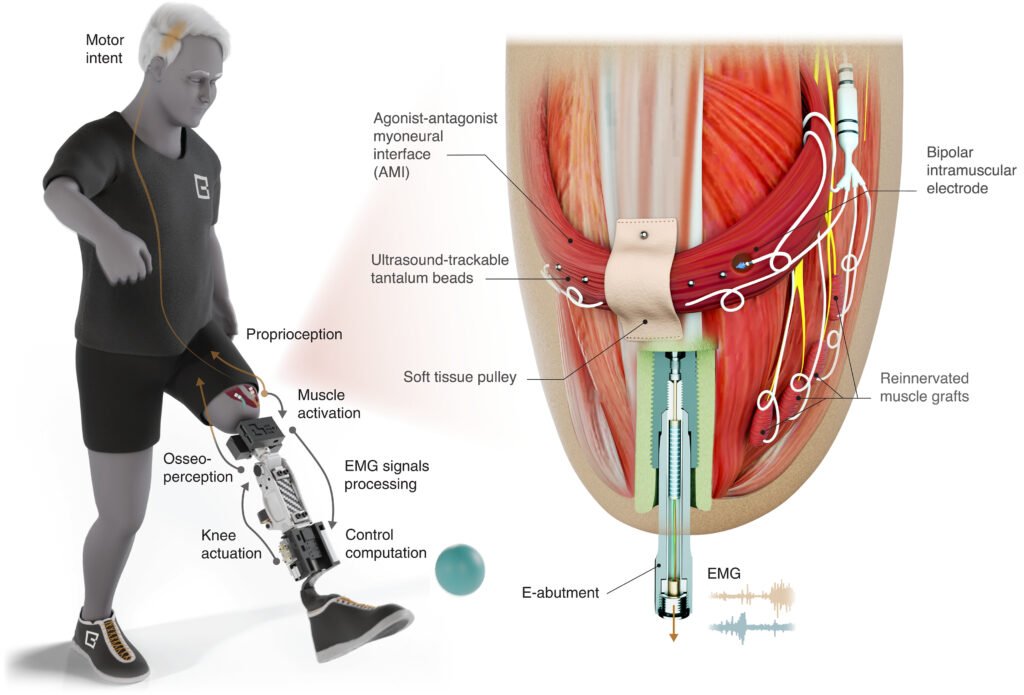MIT researchers have unveiled a new bionic knee system that could redefine prosthetic integration for people with above-the-knee amputations. Unlike traditional socket-based prostheses, which often feel like external tools, this system is anchored directly into the user’s bone and muscle tissue—restoring not only mobility but also a profound sense of embodiment.
The innovation builds on a surgical technique called the agonist-antagonist myoneural interface (AMI), developed by Professor Hugh Herr and his team. During amputation, muscle pairs that normally work in opposition—like those that flex and extend the knee—are severed, disrupting the body’s ability to sense movement. AMI reconnects these muscle pairs, allowing them to communicate dynamically within the residual limb. This reestablished feedback loop generates electrical signals that guide the prosthesis and restores proprioception, the internal sense of limb position.
To enhance this system, the researchers added a titanium implant called e-OPRA into the femur. This rod provides mechanical stability and houses 16 wires that transmit muscle signals to a robotic controller. The controller interprets these signals to calculate the torque needed to move the prosthetic knee in sync with the user’s intent. The combined system—called the osseointegrated mechanoneural prosthesis (OMP)—offers both structural integration and neural control.
In a clinical study, two participants received the full OMP system and were compared with others who had either AMI alone or neither intervention. All participants used the same powered knee prosthesis, but those with the OMP consistently outperformed the others in mobility tasks such as climbing stairs, stepping over obstacles, and bending the knee to precise angles. More strikingly, they reported a stronger sense of ownership over the limb. It didn’t just function well—it felt like part of their body.
This psychological shift is critical. Many amputees struggle with phantom limb pain and a disconnect between their prosthesis and their sense of self. By restoring natural muscle dynamics and anchoring the device to the skeleton, the OMP system bridges that gap. It’s not just about walking faster—it’s about walking as if the limb were truly theirs.
The AMI procedure is already being performed routinely for below-the-knee amputations at Brigham and Women’s Hospital, and Herr expects it will soon become standard for above-the-knee cases. The full OMP system will require larger clinical trials before FDA approval, but the early results are promising.
Take a look at a video of the bionic knee in action:
Article from MIT: A bionic knee integrated into tissue can restore natural movement
Abstract in Science: Tissue-integrated bionic knee restores versatile legged movement after amputation

